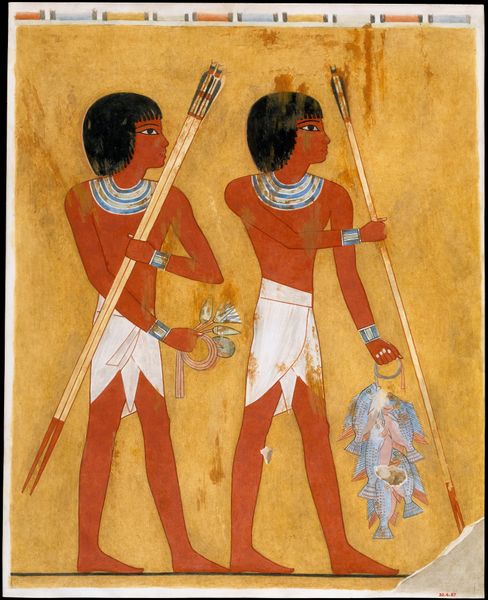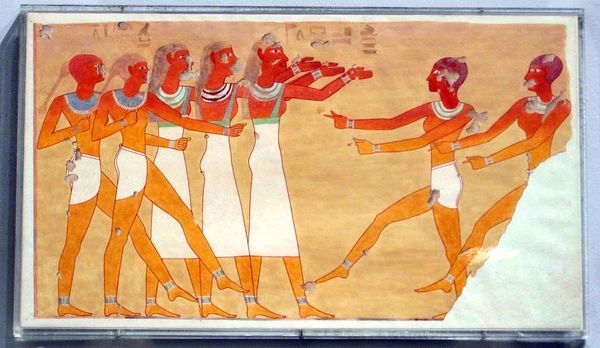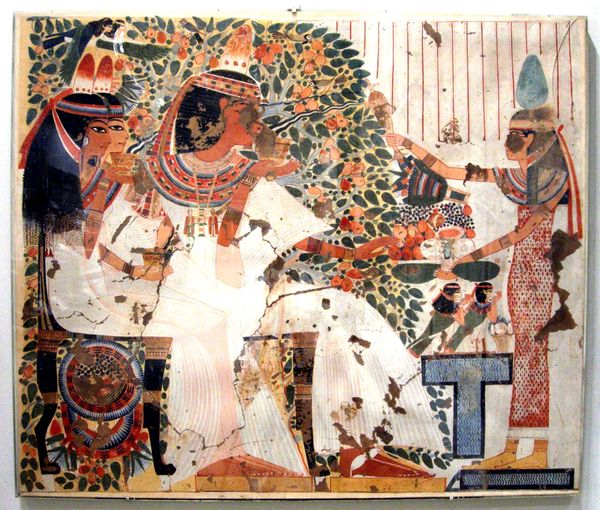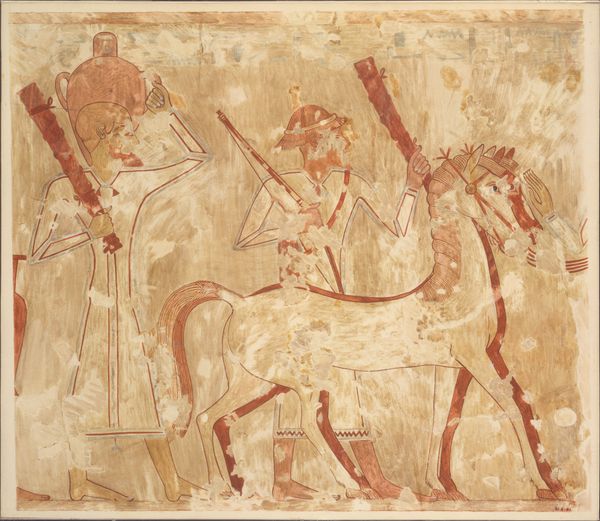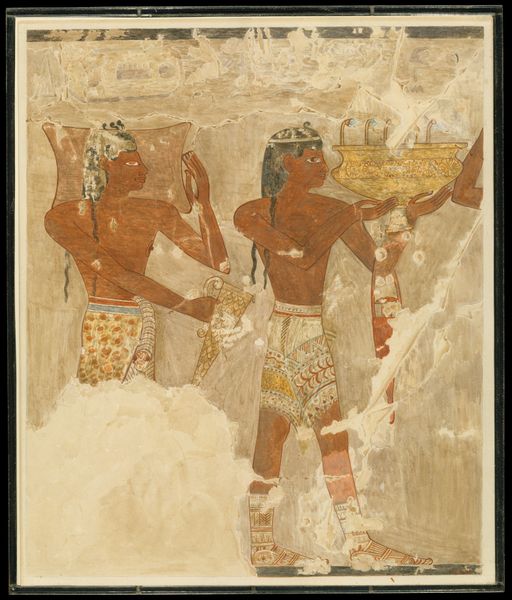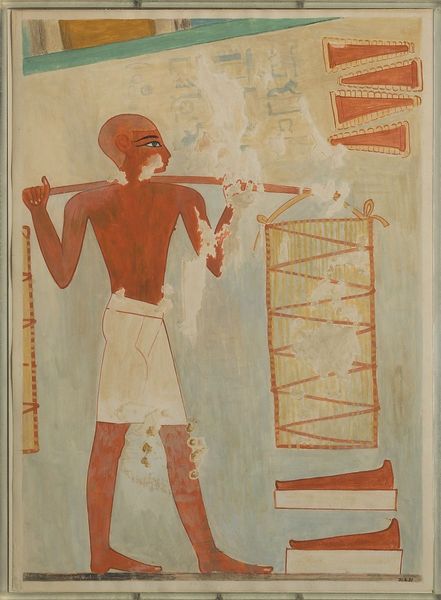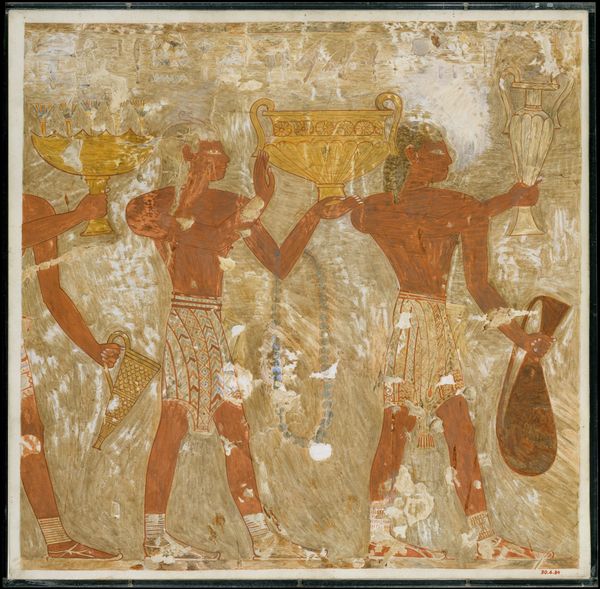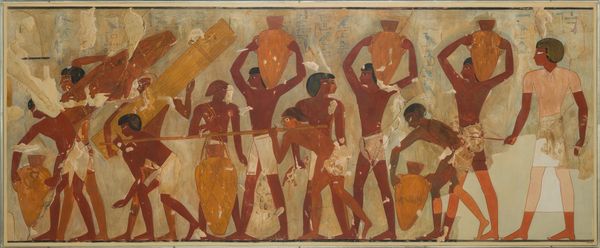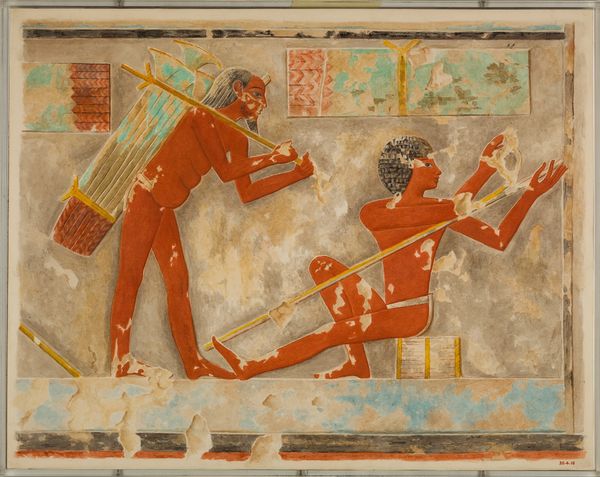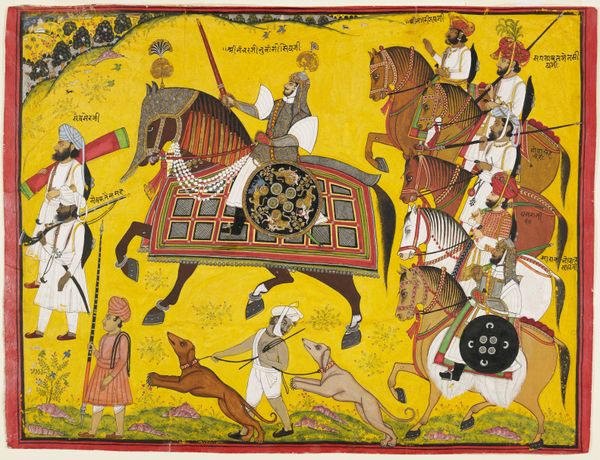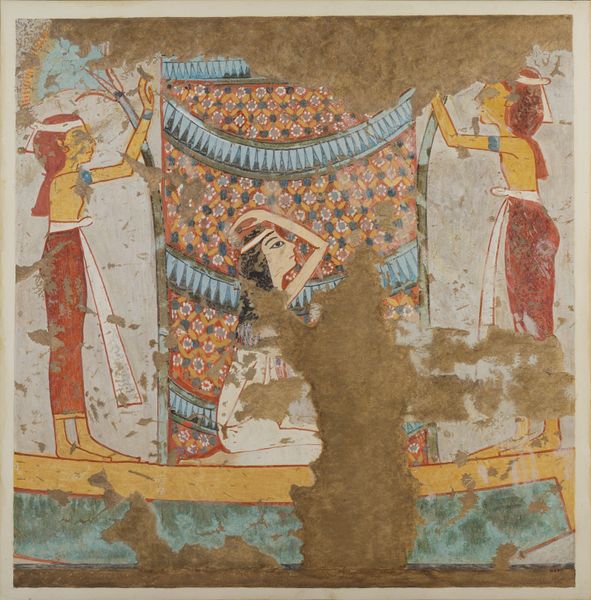
painting, fresco
#
narrative-art
#
painting
#
ancient-egyptian-art
#
figuration
#
fresco
#
oil painting
#
egypt
#
men
#
history-painting
Dimensions: facsimile: h. 53.5 cm (21 1/16 in); w. 47.5 cm (18 11/16 in) scale 1:1 framed: h. 56.5 cm (22 1/4 in); w. 48.3 cm (19 in)
Copyright: Public Domain
Curator: Today, we're observing a fresco titled "Attendants for a Hunting Expedition," dating back to 1427 BC. Currently, it resides at the Metropolitan Museum of Art. What are your immediate impressions? Editor: Strikingly stylized, isn't it? The ochre background and the figures rendered in a deep reddish-brown create a strong, almost graphic quality. Their forms are so flattened, so linear, almost devoid of depth, and yet they command a very present monumentality. Curator: The consistent application of pigment is remarkable for its age. One can easily envision the layers of preparation of the plaster substrate before pigment application, but also the labor, expertise and division of tasks to execute such images in antiquity. Editor: Let's look at these figures in more detail. Their poses and attributes – one carrying what looks like hunting tools or perhaps ritual objects – conform to the representational conventions we typically see in Egyptian art, yes? The lack of naturalism in favor of idealized forms speaks to a sophisticated, highly symbolic system of visual communication. Curator: Indeed. Consider what this piece tells us about the work associated with hunting expeditions, the types of materials they made use of, the clothing. Furthermore, the context matters, right? Wall paintings from tombs had everything to do with ritual provisions for the afterlife, the need to secure status for posterity. The means by which they constructed their beliefs has materialized. Editor: That tension between life and afterlife is a key concept here. I note that the artist’s skillful use of line defines forms and separates planes. Take a close look at the folds in their garments and the depiction of muscles—subtle indications that bring them to life within that symbolic framework. It all works together to convey dignity, solemnity, and the essence of being. Curator: Seeing as how this fresco served a crucial function, the aesthetic value must also reflect something much more practical. Every resource was valuable and put to work. Consider how material, in its extraction and handling, serves a function; in its usage, something higher. Even today it offers a view to the processes of knowledge, religion, and governance during that period. Editor: Yes, the whole painting vibrates with those energies. We are granted access not just to forms but also meanings encoded for centuries. The echoes continue. Thank you for unraveling that with me today! Curator: A pleasure.
Comments
No comments
Be the first to comment and join the conversation on the ultimate creative platform.
